Sticker shock is common when you compare drip irrigation kits: one lists at $64 and sells for $40, another is $47 on sale. They all promise tubing, emitters, and fittings—so why the price spread? This guide gives a transparent, brand-neutral cost breakdown so budget-conscious gardeners and first-time buyers know exactly what they’re paying for and how to cut total spend without sacrificing performance. Where relevant, we’ll note how Carpathen kits (often maxing out around $40 during promos) fit into the picture.
Table of Contents
- The Real Cost of Drip Irrigation Systems
- Barbed vs. Push-to-Connect: Price & Practical Differences
- Tubing Length & Layout: Your Biggest Multiplier
- Emitters & Watering Style: What Affects Price
- Accessories That Add Cost—but Save the System
- Installation: DIY vs. Pro
- Long-Term Savings: How Drip Pays Back
- Spend Less: Smart Ways to Buy
- 3-Year Value Snapshot
- Quick Price Context: Carpathen vs. Other Brands
- Frequently Asked Questions
- Conclusion
The Real Cost of Drip Irrigation Systems
For most home gardens (raised beds, borders, planters), a complete kit now realistically lands between $35 and $60 depending on brand, fittings style, and what’s in the box. Carpathen kits frequently sit at the low end—around $39–$40 during sales—while other major brands often range $45–$60 on promotion.
- System type: barbed vs. push-to-connect fittings.
- Scale: total tubing length + number of emitters you plan to run.
- Included protection: filter and pressure regulator (these add a few dollars but prevent the most common failures).
Barbed vs. Push-to-Connect: Price & Practical Differences
The fittings style influences both upfront price and the time you’ll invest in setup or seasonal changes.
| Feature | Barbed System | Push-to-Connect System |
|---|---|---|
| Typical kit price (current market) | $35–$45 | $40–$60 |
| Connection method | Tubing fits over barbs | Tubing slides into a collet |
| Setup speed | Moderate; more manual effort | Fast; tool-free and modular |
| Best for | Permanent, budget-first layouts | Seasonal changes, quick expansions |
Bottom line: Barbed keeps the sticker price low; push-to-connect can reduce “time cost” and small re-buy expenses across seasons.
Tubing Length & Layout: Your Biggest Multiplier

Footage drives fittings count and emitter count. Buying a spool instead of small refill packs usually cuts cost per foot by 20–40%.
| Garden Size | Typical Tubing Needed | Approx. Tubing Cost (current) |
|---|---|---|
| 1–2 raised beds | 50–100 ft | $20–$26 |
| 3–4 beds / small yard | 150–200 ft | $30–$50 |
| 6–8 beds / long borders | 300–400 ft | $60–$100 |
Emitters & Watering Style: What Affects Price
- Fixed-flow vortex emitters (20–40 GPH): Most affordable and durable for general beds.
- Adjustable spray/stream emitters: Slightly pricier ($0.35–$0.60 each) but add control for shrubs/containers.
- Inline dripline with built-in emitters: Clean look and uniform output; adds ~10–20% versus separate staked emitters.
Accessories That Add Cost—but Save the System
These parts prevent the failures that trigger expensive rebuys and plant loss.
| Component | Purpose | Typical Cost (current) | Why It Matters |
|---|---|---|---|
| Filter | Traps debris/sediment | $3–$6 | Stops emitter clogs; protects valves/regulators |
| Pressure regulator | Keeps 20–45 PSI | $5–$8 | Prevents blowouts and uneven flow |
| End plugs & tees | Close/split lines; easy flush | $3–$5 | Essential for layout flexibility |
| Stakes/holders | Secure emitters/tubing | $2–$5 | Consistent targeting; fewer repairs |
Expect accessories to add ~10–20% to the kit price while doubling useful lifespan via protection and serviceability.
Installation: DIY vs. Pro
- DIY: Usually 1–2 hours; $0 labor cost beyond the kit.
- Pro install: $200–$400+ depending on zones/soil/complexity.
If you can follow a simple diagram or video, DIY is straightforward—especially with push-to-connect. Consider pros for complex manifolds or integrated timer/valve boxes.
Long-Term Savings: How Drip Pays Back
A kit may cost more than a sprinkler today, but it often pays back within a season:
- Water savings: Targeted delivery and low evaporation typically save $40–$100/year on a typical home bill.
- Healthier plants: Consistent moisture reduces replacement costs (one lost shrub can exceed the price of a kit).
- Lower maintenance: Correct pressure + filtration = fewer failures and emergency buys.
Spend Less: Smart Ways to Buy
- Size it right: Buy for today’s beds; add-on later. Overbuying “just in case” inflates cost.
- Compare specs, not hype: Tubing dimensions, PSI range, UV resistance, and included protection matter most.
- Split your faucet: A $10–$15 hose splitter creates multi-zones without extra timers.
- Winterize properly: Store filters/regulators indoors; freeze damage is the #1 avoidable expense.
- Shop off-season: Late fall/winter promos often drop complete kits into the $35–$45 range.
3-Year Value Snapshot
| Category | Year 1 | Year 2 | Year 3 | Total | Notes |
|---|---|---|---|---|---|
| System purchase | $40 | — | — | $40 | Representative Carpathen promo price |
| Minor replacements | — | $5 | $5 | $10 | Extra emitters/short tubing |
| Maintenance (cleaning, screens) | $3 | $3 | $3 | $9 | Vinegar for descaling, small parts |
| Water savings | - $40 | - $40 | - $40 | - $120 | Conservative for typical home |
| Net over 3 years | - $61 | Savings exceed the investment | |||
Quick Price Context: Carpathen vs. Other Brands

Market prices fluctuate with promos, but a recent snapshot looks like this:
| Brand / Kit | Typical Promo Price | What’s Included (high level) | Notes |
|---|---|---|---|
| Carpathen – Barbed Drip Kit | $39–$40 | Mainline + emitters + fittings, plus filter & regulator in most kits | Strong value for permanent layouts |
| Carpathen – Push-to-Connect Drip Kit | $39–$49 (promo) | Fast, modular fittings; adjustable emitters | Great for seasonal reconfiguration |
| Other Brands – Landscape & Garden Kit | $46–$50 (promo) | Well-known brand kit with stakes/emitters | Often priced slightly higher than Carpathen on sale |
Conclusion: Shopping sales puts most quality kits in the $35–$60 band. Carpathen frequently hits the low end (~$40), which tightens your payback window.
Frequently Asked Questions
Can I get a reliable kit for under $50?
Yes. Many full kits—especially on promo—land between $35 and $50 and include the essentials. Focus on kits with a filter and regulator to avoid hidden costs later.
Is push-to-connect really worth it if I’m on a budget?
If your layout will change or you tear down for winter, yes—time savings and easy reassembly can offset the slightly higher sticker price. For fixed layouts, barbed is the best value.
How much tubing should I buy up front?
Measure, then add 10–15% for routing and errors. For most small raised-bed gardens, 100–150 ft is a practical starting point—and buying a spool lowers cost per foot.
Do I really need a pressure regulator and filter?
Yes. They cost just a few dollars and prevent the two most expensive problems: blowouts and clogs. They typically double system lifespan.
Will drip actually lower my water bill?
In most gardens, yes—by 30–50% versus overhead sprinklers or casual hand watering. A $40–$100/year reduction is common, which can repay a kit in one season.
Conclusion

Real-world pricing for complete home drip systems sits around $35–$60, with Carpathen often at the value end (~$40 on promo) and other big brands commonly in the mid-$40s to $50s. Your largest cost drivers are fittings style, total tubing footage, and whether protection (filter + regulator) is included. Buy to fit today’s layout, expand later, and maintain the system during winterization. Done this way, drip irrigation typically pays for itself within a season or two through lower water bills, healthier plants, and fewer emergency repairs—no matter which brand you choose.
Next step: sketch your beds, count emitters, and compare kits by specifications (tubing length, PSI range, filtration) rather than by headline price alone. That’s how you find real value.


































